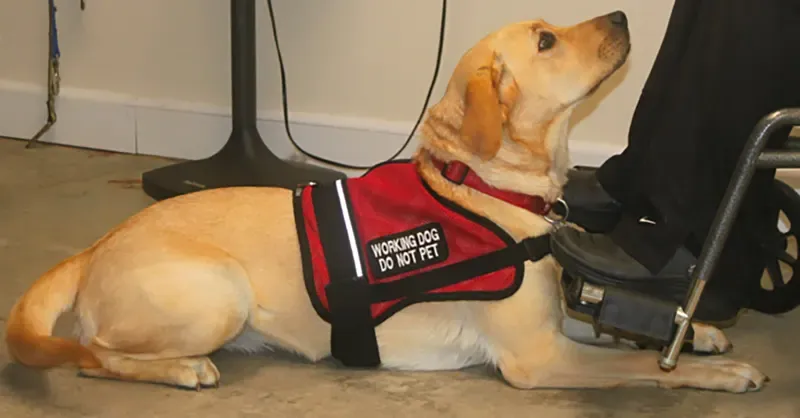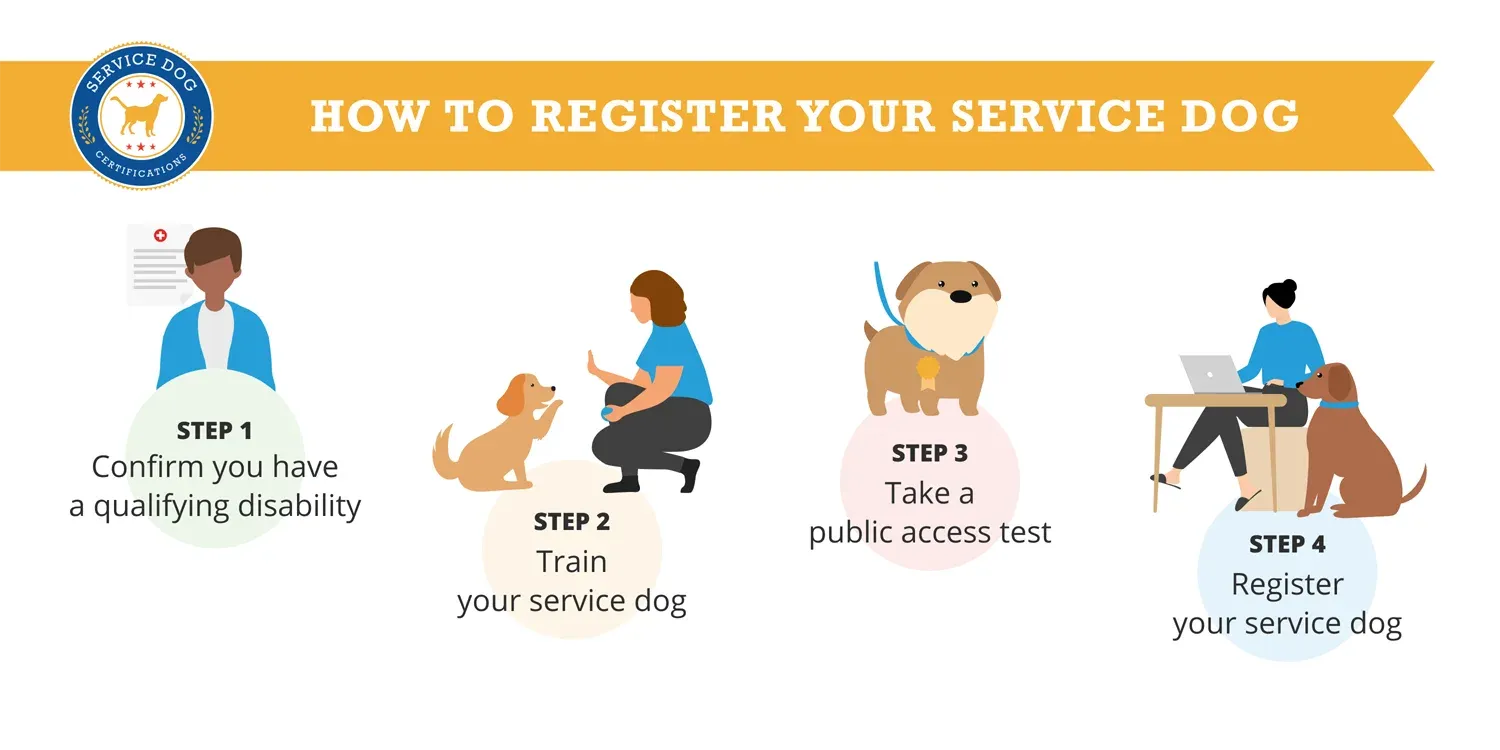Service dog requirements under the Americans with Disabilities Act (ADA) ensure these specially trained dogs can assist people with disabilities effectively. A service dog is defined as a dog individually trained to perform tasks or work directly related to a person’s physical or mental disability, such as mobility issues, visual impairments, hearing loss, depression, anxiety, or PTSD. Understanding these requirements is essential for handlers seeking public access rights and reliable support from their canine partners.
What Are the Service Dog Requirements?
To qualify as a service dog, both the handler and the dog must meet specific criteria focused on disability assistance and public behavior.
Eligibility requires the handler to have a physical, emotional, or mental health disability that substantially limits major life activities, like walking, seeing, hearing, working, sleeping, or socializing. The dog must be trained to perform specific tasks tied to that disability, such as retrieving items, alerting to seizures, providing deep pressure therapy during panic attacks, or guiding through crowds.
The ADA does not mandate professional training—handlers can train their own dogs—but the dog must remain under control at all times, typically via voice commands, signals, or leash. In public, staff can only ask two questions if the dog’s role isn’t obvious: (1) Is this a service animal required because of a disability? (2) What work or task has the dog been trained to perform? No documentation, demonstrations, or details about the disability can be requested.
Optionally, accessories like vests, ID cards, tags, or certificates help identify the dog, reducing misunderstandings in places like stores, restaurants, or hotels, though they are not legally required.
 Service Dog Requirements – ServiceDogCertifications
Service Dog Requirements – ServiceDogCertifications
How Does My Dog Become a Service Dog?
Turning your dog into a service animal involves four key steps, emphasizing targeted training and real-world reliability.
Step 1: Confirm Eligible Disability
First, verify your condition qualifies under the ADA. Physical disabilities might include blindness, paralysis, or epilepsy, while psychiatric ones cover severe anxiety, depression, or PTSD. For mental health issues, obtain a letter from a licensed mental health professional (LMHP) on their letterhead, including their credentials, license details, and confirmation of your disability and need for a psychiatric service dog (PSD). This step establishes the foundation for task-specific training.
Step 2: Train Your Service Dog
Train the dog to perform disability-related tasks, such as opening doors, picking up dropped items, interrupting dissociative episodes, or providing balance support. No U.S. organization sets mandatory standards, so self-training is allowed. Guidelines from private groups suggest around 120 hours over six months, with at least 30 hours in public settings to build distraction tolerance. Focus on reliability in varied environments, using positive reinforcement for commands like “task” cues.
 Service Dog Registry Banner
Service Dog Registry Banner
Common tasks include medical alerts, mobility assistance, or PTSD interruptions like room scanning or grounding. Accessories like vests signal the dog’s working status, encouraging public respect.
Step 3: Pass a Public Access Test
Service dogs must behave appropriately in public, passing criteria like no aggression, no jumping or soliciting food/attention, tolerance of distractions (noises, crowds), controlled elimination, and minimal barking. They should ignore temptations like sniffing unless commanded. This ensures safe access to businesses, transportation, and housing without disrupting others. Test in real scenarios to confirm composure.
Step 4: Consider Certification and ID
While not required, registering for an ID card or certificate verifies training and eases interactions. These optional tools display registration numbers for quick lookups, helping in no-pet zones. Handlers report fewer challenges when dogs wear vests or carry IDs.
 How to register your service dog – 4 steps – infographic
How to register your service dog – 4 steps – infographic
Alternatives If Training Is Challenging
If task training proves difficult, consider an Emotional Support Animal (ESA). ESAs require no specific training, offer housing protections under the Fair Housing Act (no pet fees or breed bans), and suit conditions like anxiety or depression. A LMHP letter qualifies you, and ESAs can be any species, like cats or birds, unlike service dogs.
Mastering service dog requirements empowers handlers with independence and access. Start by assessing your needs, commit to thorough training, and practice public behavior for seamless integration. For personalized guidance on service dog training, explore resources at Dog Care Story or consult certified trainers to build a reliable partner.
